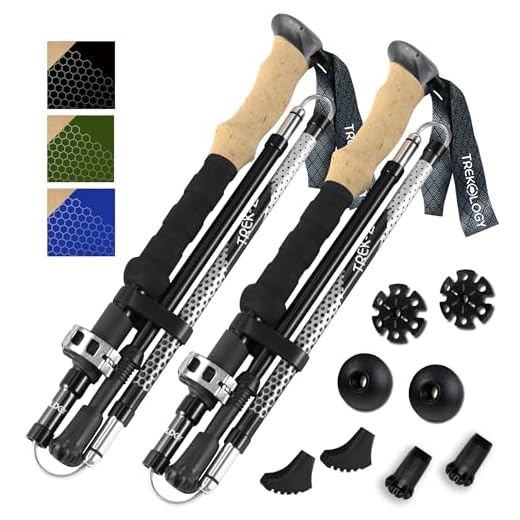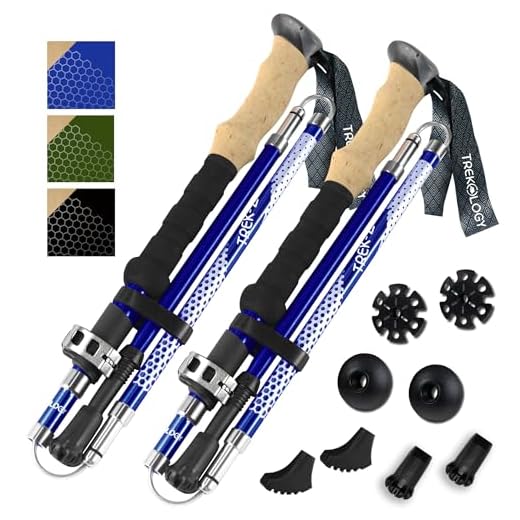







Size rule: aim for a folded length ≤55 cm (22 in) so the item fits inside common cabin bags. Typical internal cabin-bag dimensions to use as reference: 55×40×20 cm (most European carriers) and 56×36×23 cm / 22×14×9 in (many US airlines). If the support folds longer than these values, prepare for stowage in the aircraft hold.
Tip and construction requirements: remove or fully cover exposed metal or carbide tips with rubber caps; lock telescoping sections and pad the shaft with foam or clothing; place the assembled item in a padded sleeve or inside checked baggage if protection or containment is inadequate.
Security and operator rules: Transportation Security Administration (TSA) permits canes and similar walking aids in the cabin, but officers may deny carriage of items with sharp points. International carriers and airport authorities differ: many require items that cannot be safely contained within accepted cabin dimensions to be checked. Always verify the specific airline and departing/connecting airport security pages before departure.
Practical checklist before travel: 1) confirm carrier policy by phone or website; 2) measure folded length and weight against cabin allowance; 3) fit the item inside the intended carry container for a real test; 4) protect tips and locking mechanisms; 5) be prepared to check the item at gate if requested by ground staff.
Allowed Status of Trekking Sticks in Carry-On
Do not place trekking sticks in carry-on: U.S. Transportation Security Administration lists them as items prohibited from the cabin; they must be transported in checked baggage or shipped separately.
Walking aids declared as mobility devices follow different rules: collapsible cane or walking stick used for disability is generally permitted in the cabin after coordination with the carrier and presentation of any requested documentation; gate check is a common option for mobility aids.
Packing recommendations for checked transport: fully collapse telescoping sections, lock segments to prevent extension, fit a rubber tip or a commercial protector over sharp ends, enclose in a rigid tube or padded bag, wrap with clothing to limit impact, clearly label with contact information, and consider additional strapping to avoid shifting during handling.
Before departure verify the specific airline policy: some carriers treat trekking equipment as sporting goods with separate size/weight limits or extra fees; measure collapsed length and total linear dimensions against the carrier’s checked-bag rules to avoid oversized-item surcharges or refusal at the desk.
At the airport declare the item at check-in if required, allow extra time for inspection, keep proof of purchase or manufacturer details handy in case of questions about materials, and photograph the packed item for insurance purposes.
If multiple connections or strict regional regulations are involved, consider courier shipping: select a reputable carrier, insure for full value, and allow several days for transit to avoid delays or damage to specialty equipment.
Airlines Allowing Collapsible Walking Sticks in Carry-On
Recommendation: collapse walking sticks, sheath or cap the tips, place inside a protective sleeve, and notify the carrier at least 48 hours before departure; many major airlines permit folded sticks in carry-on if they fit size/weight limits, but gate staff or security may require gate-checking or checked placement.
- American Airlines, Delta Air Lines, United Airlines – Folded walking sticks are generally accepted in a carry-on allowance when fully retracted and tip-protected. Expect screening inspection; airline staff may request gate-checking if overhead space is limited.
- Southwest, Alaska Airlines, JetBlue – Similar treatment to the legacy U.S. carriers: allowed when compact and safely covered; present at check-in to avoid surprises. Space constraints can trigger a gate-check.
- British Airways, Lufthansa, Air France, KLM – Flag carriers typically accept collapsible walking sticks in the cabin if folded, or as mobility aids with prior notice (no extra fee when documented). If not declared as an aid, staff may ask for checking.
- Ryanair, easyJet, Wizz Air – Low-cost European operators frequently treat crew-approved walking sticks as sporting equipment; many require they be checked or paid for as an oversized item. Small folded sticks that meet cabin size rules may be allowed, but pre-approval is strongly advised.
- Qantas, Virgin Australia – Folded sticks usually acceptable in carry-on subject to dimensions; mobility-aid status typically allows carriage without charge when notified in advance.
- General security rule (TSA, EU security authorities) – Screeners accept collapsible walking sticks when tips are covered and there are no sharp implements. Final allowance rests with the security officer and the airline’s operational staff.
- Collapse completely and secure joints; tape or cap sharp tips.
- Store inside a padded sleeve or wrap to prevent damage and to show the item is non-threatening at X‑ray.
- Keep photos of the packed item and purchase receipt handy in case staff request proof of collapsibility or value.
- Notify the carrier at booking or by phone and ask about carriage rules for small sporting or mobility items; request written confirmation if possible.
- Arrive extra early for check-in and security to resolve gate or screening issues without missing departure.
How to Pass Security: Preparing Telescopic Poles for X‑ray and Manual Checks
Fully collapse and lock telescopic trekking sticks, wrap exposed joints with brightly colored tape, and place them inside a transparent, resealable plastic bag labeled with name and contact details.
For X‑ray screening: remove removable rubber tips and wrist straps, lay sticks flat and alone on the conveyor (separate from electronics, keys and belts), and align sections so metal overlaps are minimized. If possible, position long items lengthwise near the tray edge to reduce shadowing on the image.
For manual inspection: unlock and extend one section slowly on request to show internal construction and the absence of hidden compartments; produce a printed product label or a photo of manufacturer specifications from a phone to confirm material (carbon or aluminum) and model.
Documentation and pre-screening: save any written approvals or airline/security correspondence as screenshots and a printed copy, attach a small travel tag with product name and material, and carry a basic receipt or packing slip to speed verification.
If an alarm occurs, present the sticks on the tray immediately and request a private inspection only if privacy is preferred; accept that security personnel may retain the item if it fails local screening rules.
Dimension and Material Limits: Measuring Trekking Sticks and Recognizing Prohibited Components
Collapse trekking sticks to ≤45 cm (18 in) and cover or remove sharp tips; fixed metal spikes and built‑in blades belong in checked baggage.
Measure three values before travel: collapsed length, maximum extended length and maximum cross‑section (diameter). Method: with a tape measure, record collapsed length from grip top to tip (include rubber cap or basket if attached), record extended length with all sections locked, measure shaft diameter at the widest section using calipers or a ruler. Typical ranges: collapsed 35–45 cm (14–18 in), extended 100–140 cm (39–55 in), shaft diameter 14–25 mm (0.55–1 in). Record weight on a postal scale; keep individual stick under ~1.5 kg (3.3 lb) to avoid manual handling issues.
Materials that raise screening flags: exposed carbide or steel spikes, integrated knives or cutting edges, gas cartridges or pressurised canisters, detachable multi‑tool heads and rigid ice‑axe fittings. Replace metal spikes with rubber tips or remove baskets and spikes for cabin carriage; items with blades or fixed spikes must be transported in checked baggage.
Telescopic locking systems: twist‑lock and lever‑lock designs collapse more compactly than push‑button spring designs. Push‑button shafts with internal springs may extend unexpectedly during X‑ray or manual inspection; secure such shafts with tape or a reusable strap and place loose internal parts in a labelled clear plastic bag.
Prepare for screening by separating accessories: store extra tips, baskets and replacement tips in a transparent bag with a small card listing dimensions and weight. For inflating spare rubber caps or other replacement gear before departure consult how to inflate tire with air compressor easy steps and pro tips.
Packing Alternatives When Cabin Carry Is Denied: Checked Bag, Gate‑Check, or Shipping
If cabin carriage is refused, load trekking sticks into a rigid, lockable checked case with individual foam sleeves around each shaft segment, bubble-wrap at joints, and tip protectors; collapse all sections, secure with tape or Velcro, and place a copy of ID inside the case.
Checked-case: size, weight and packing checklist
Airline size limit commonly used for checked items: 62 linear inches (length + width + height = 158 cm). Oversize surcharges typically apply above that: $100–$300 on major carriers; international oversized fees often higher. Aim for single-bag weight under 50 lb (23 kg) to avoid the standard overweight fee; 50–70 lb (23–32 kg) incurs separate charges, and >70 lb may be refused or charged premium fees. Use a hard-shell ski/sport case or reinforced polycarbonate trunk; pad each collapsed section with closed-cell foam tubing, surround joints with corrugated cardboard, and lock with a TSA‑accepted lock (TSA agents can open without damage). Remove carbide or sharp tips when possible and pack them inside a separate padded pouch inside the case to avoid punctures and claim disputes. Clearly mark the case “FRAGILE” and attach exterior name tag and phone number plus inside identification.
Gate‑check vs shipping: when to choose which option
Gate‑check is practical only for fully collapsed, short shafts that fit under aircraft stowage (typical max collapsed length 30–45 in / 76–114 cm; confirm with the carrier). Procedure: collapse, wrap in a protective sleeve or bubble wrap, present at the aircraft door for tagging; expect basic handling and higher risk of scuffs or broken tips. No guaranteed compensation beyond standard checked-bag liability. If item length exceeds checked-bag linear limits, or if risk of damage is unacceptable, ship instead.
For shipping domestically, use major couriers (FedEx, UPS, USPS Retail/Parcel Select) with a rigid tube or skid box. Typical cost range within the same country: $30–$120 depending on length, weight and distance; international rates start higher and may require freight quotes. Insure declared value equal to replacement cost, request signature on delivery, and add “fragile” handling. Use heavy-duty corrugated box + internal bracing; secure tips with PVC end caps and center supports to prevent bending. Place a Bluetooth or GPS tracker inside to monitor transit – see best luggage tracker for android users for suitable devices. For homemade tip protection methods and fabric sleeves that resist sand and moisture, review packing ideas such as those for beach gear at best way to put a beach umbrella in the sand and adapt the protective sleeve approach.







